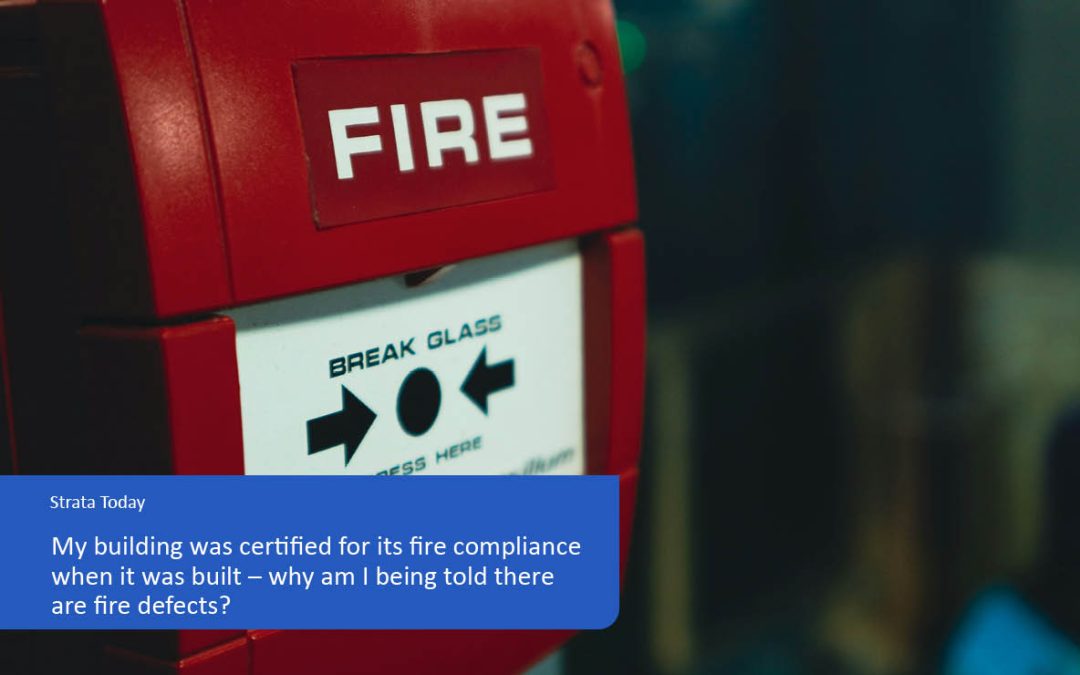As part of a development receiving approval from Council to proceed to be built and registered with the Titles Office, Council will require that, in accordance with the proposed layout of the building, the developer engage specialist fire engineers to review and advise on/amend proposed building plans and to ultimately sign off on certification of the building as to its fire compliance, following inspections during its construction and completion stages.
It is common for a residential building, again depending on its layout, to have both “active” and “passive” fire protection infrastructure installed into the fabric of the building.
Depending on the type of fire protection infrastructure; that infrastructure may require yearly inspections, or it may require inspections at more regular intervals once the building has received its Certificate of Occupancy and people have moved into it.
Much like buying a brand-new car, the day you drive your car off the dealership floor, it is certified to keep you safe and provided you undertake regular servicing – the vehicle should perform to the standards expected of it. But you must service it. You must buy new tyres and eventually you will need to buy a battery. These are normal expenses.
The passive and active fire systems in brand new buildings are no different.
The building is certified as fit for human habitation (Certificate of Occupancy) and from that day forward it is up to the owners to make sure that active and passive fire infrastructure is maintained in accordance with the installation specifications, with QBCC and QFES specifications.
Much like a new car – you cannot expect a brand-new building’s fire infrastructure to function as anticipated if your maintenance of that infrastructure ends with its fire certification.
Regular maintenance must be performed.
And this is where Committees can find themselves at odds with their fire contractors and consultant fire engineers/fire contract auditors.
Most Committee Members, cognizant of spending owners’ money, are not fire engineers or fire subject-matter-experts and often do not know out of the list of quoted works they receive from their fire contractors, which works (if any) are “nice to have” and which works are screamingly important and must be completed.
From the Committee’s standpoint, it can sometimes seem like the items raised by the fire contractor appear to be very minor works. We certainly feel for Committees navigating this complex area of compliance.
Fire auditors have their place in assisting the Committee to understand what fire assets exist on site, how often those assets are required to be serviced and whether the fire contractor is undertaking the required servicing. Committees must be aware that if their servicing is not up to the required standard, the Body Corporate is still liable to QFES if a random inspection is undertaken.
When in doubt a Committee can request the QFES visit their site to review fire assets and provide advice – however – that call out is not without its drawbacks, which we will examine further in the next installment.
